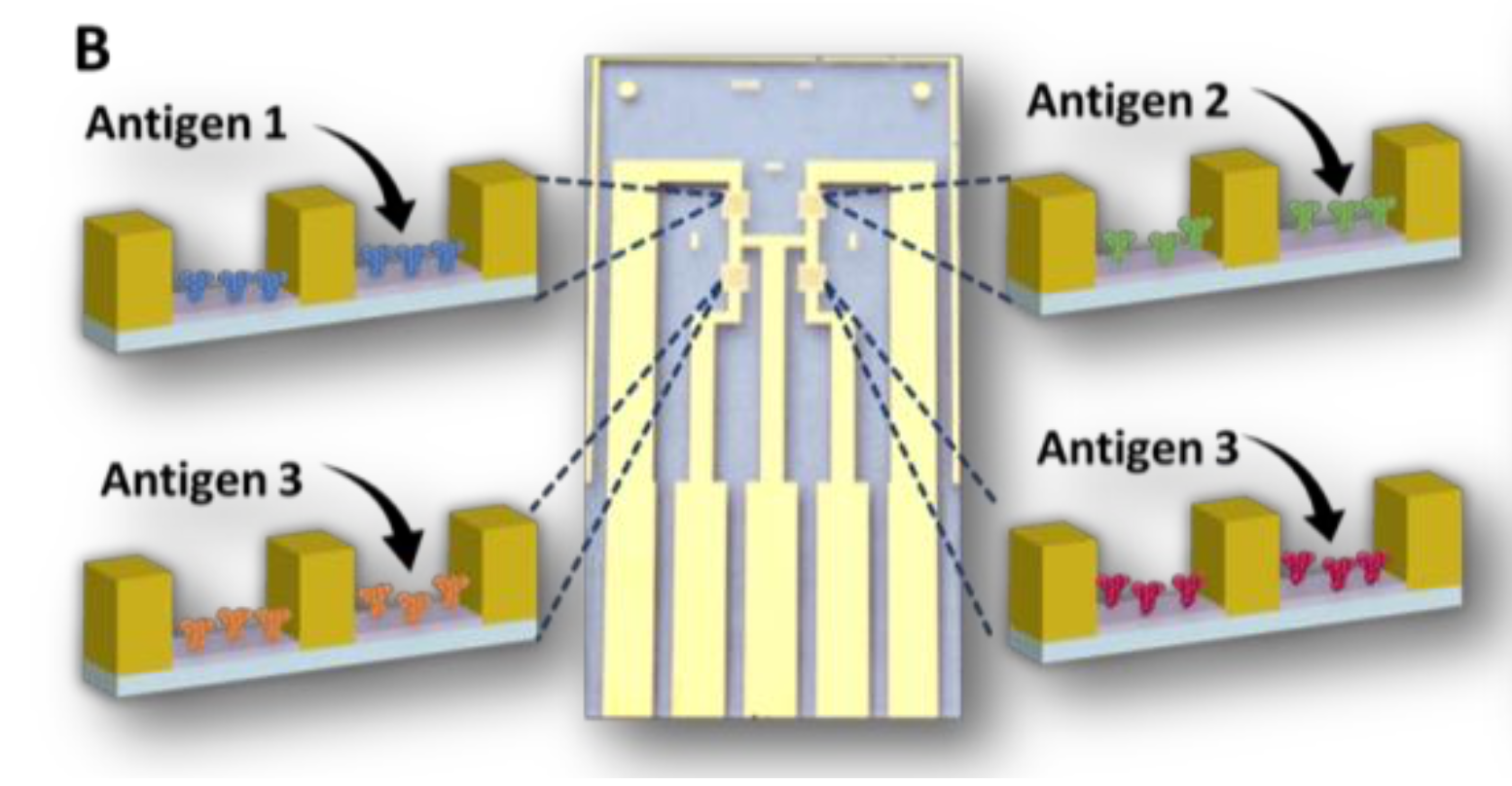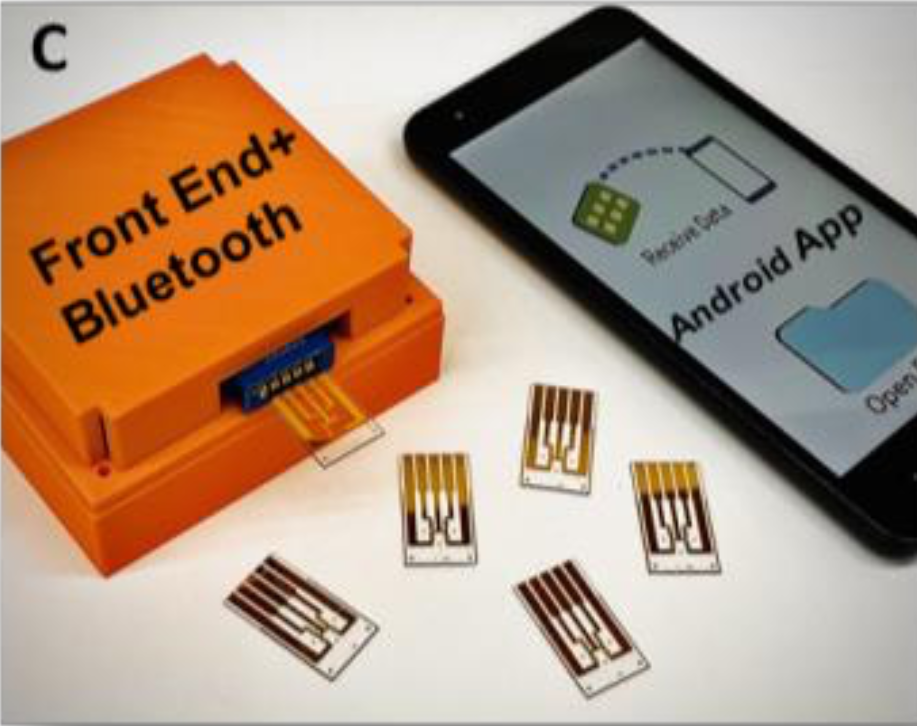This inexpensive, portable electronic detection microchip is designed to simultaneously detect and clearly differentiate multiple biomarkers without the use of any intermediate optics (e.g., COVID-19 biomarkers, including antigen-specific antibodies [S- and N-specific IgG and IgM] and viral antigens [S]). The highly sensitive, multiplexed electronic enzyme-linked immunosorbent assay (E2LISA) microchip was developed at Georgia Tech to enable disease diagnosis, prediction of vaccine effectiveness, durability, and potentially disease prognoses. The technology uses enzymatically amplified silver metallization on nanostructured surfaces for electrical detection. The inventors crafted it as a custom handheld reader to enable point-of-care identification and monitoring of biomarkers and vaccine responses in remote and resource-poor settings. This detection method could be extended to other molecules and diseases, using appropriate capture agents and probes.
- Direct electronic detection: This innovation provides direct detection of biomarkers as a simple electronic readout without the use of any intermediate optics.
- Multiplexed: The device can simultaneously detect multiple biomarkers (e.g., a four-plex chip to detect IgG and IgM antibodies against spike or nucleocapsid antigens).
- Portable: A handheld, cellphone-interfaced reader is designed to enable detection and monitoring of diseases in remote areas for sensitive yet inexpensive point-of-care use.
- High throughput: The technology is also compatible with standard high-throughput screening and automation platforms (e.g., 96 or 384 samples).
- Simple and inexpensive: Rather than relying on expensive optical detection and lab-based instruments, this innovation uses electrical detection. By connecting to a cellphone app via Bluetooth®, the technology provides simple and cost-effective signal readout and analysis of results.
- Small sample volumes: This method is designed to detect multiple biomarkers from a single microliter-scale drop of sample.
- High sensitivity: It is designed to clearly differentiate antibody responses from prior infections, uninfected but vaccinated, and healthy negative samples.
- Extendable: In addition to COVID-19, the method could be used to detect other molecules and diseases, using appropriate capture agents and probes.
Bluetooth is a registered trademark of Bluetooth SIG, Inc.
- Diagnostic device
- Quantitative detection of COVID-19 biomarkers
- Quantitative detection of other molecules (e.g., antibody glycosylation, antigens, DNA, RNA) and diseases (e.g., Tuberculosis, Neglected Tropical Diseases)
- Prognostic monitoring device
- Quantitative multiplexed detection of prognostic biomarkers (e.g., donor-specific antibody-based early detection of transplant rejection)
- Vaccine efficacy monitoring
- Quantitative monitoring of vaccine correlates of protection (e.g., neutralizing antibodies)

Schematic of multiplexed chip for detection of four biomarkers from a sample droplet

Schematic of high-throughput chip for screening large numbers of clinical samples

Portable LCR (L: inductance, C: capacitance, and R: resistance) meter for multiplexed impedance measurements
